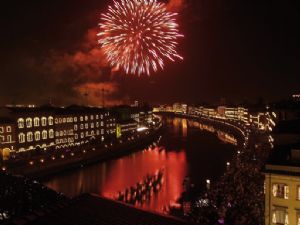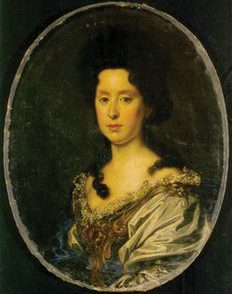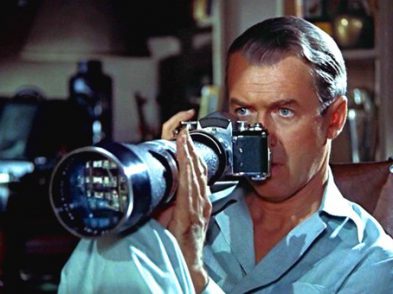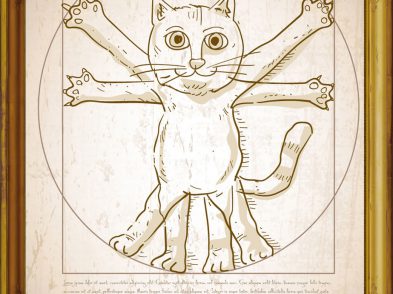May 12 marks the anniversary of the birthday of Florence Nightingale, the remarkable Englishwoman who revolutionized conditions in hospitals around the world, established nursing as a profession, and helped inspire the foundation of the Red Cross. Born at Villa Colombaia, on via Campora near Bellosguardo, in Florence, she was named after the city of her birth.
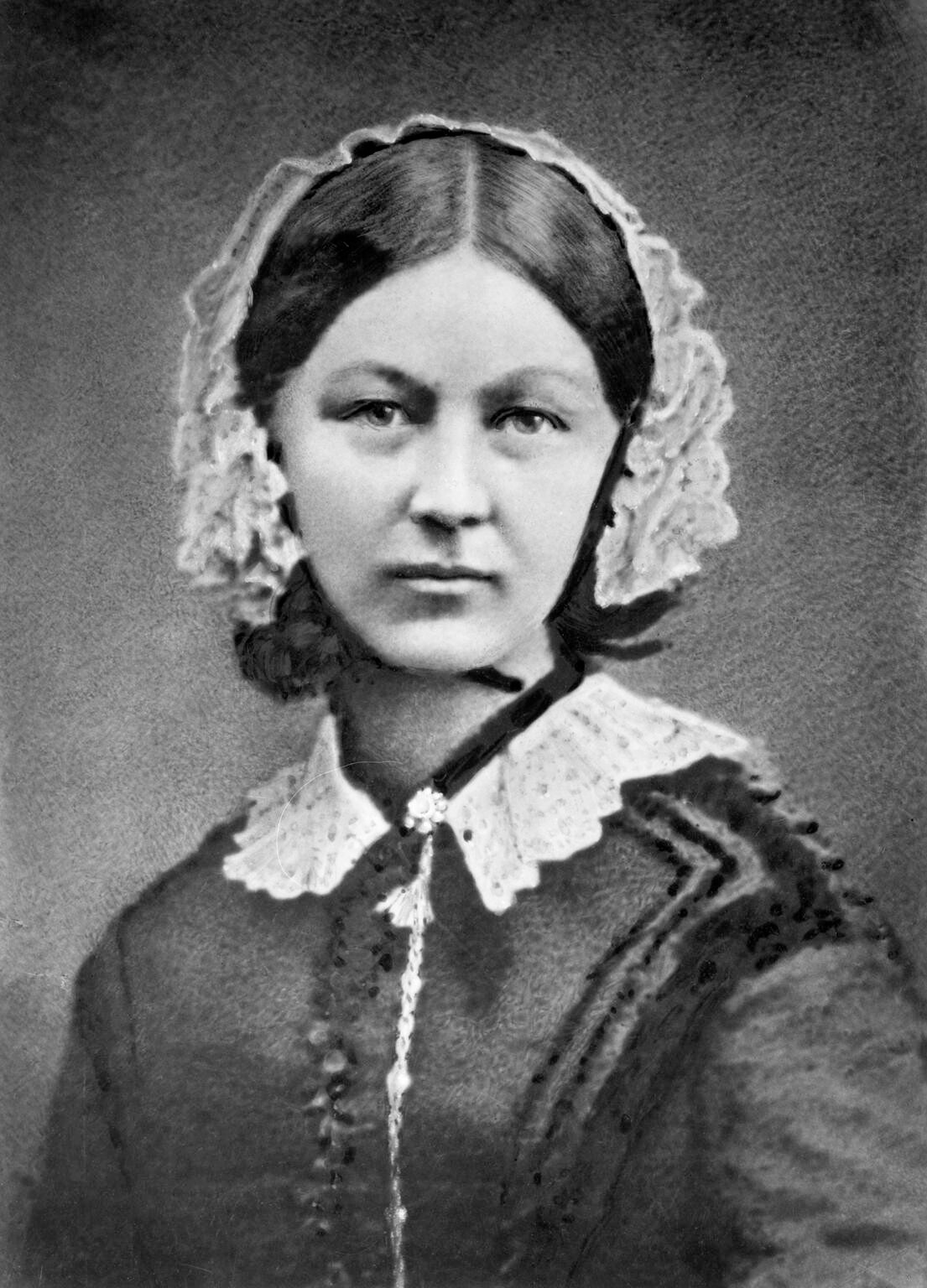
Photograph of Florence Nightingale by Henry Haring, National Portrait Gallery, London
Florence Nightingale’s wealthy parents were on a leisurely trip through Europe after their marriage when she was born. Florence’s sister, Parthenope, was born in Naples and given the ancient Greek name of the southern Italian city. “Florence” was not a common name until Florence Nightingale became a heroine during the Crimean War, when many English and American women named their daughters after her. Most girls and women who were given the name knew that they had been named after Nightingale, but did not realize that they were indirectly named after the city of Florence.
When she was 17 years old, Florence felt that she had been called into God’s service, but was not yet sure in what capacity. By the time she reached 24, she knew that her calling would involve caring for the sick. Most hospitals at that time were filthy and the patients neglected. Nursing was not considered a suitable occupation for respectable women. Nightingale knew that she would need special training to revolutionize hospital conditions. She was 33 when her parents grudgingly consented to allow her to prepare to become a nurse. She trained in hospitals in Paris, France and in Kaiserwerth, Germany, which were known at the time to have high standards.
She returned to London after completing her training and took charge of the Institution of Sick Gentlewomen in Distressed Circumstances, which she made into a model organization. In March 1854, England and France allied themselves with Turkey to declare war on Russia, and the Crimean War began. Public opinion in England was raised when it became known that provisions to care for the sick and wounded were completely inadequate.
Sidney Herbert, then secretary of war, asked Nightingale to go to Scutari, Turkey, with a group of nurses to care for the sick and wounded. When she arrived with her band of 40 nurses, she overcame almost insurmountable obstacles, including the hostility of the military, to have the filthy, rat-infested wards cleaned and to provide the patients with clean and adequate bedding, food, water and medical supplies. As a result of her work, the death rate in the Turkish hospital dropped by 50 per cent. The soldiers called her the ‘Lady of the Lamp’ because of her nightly rounds through the hospital wards.
At the end of the war, Nightingale wanted none of the acclaim the public gave her. She traveled back home incognito after the last soldier had left the hospital. Exhausted by her work, she soon became an invalid, but she continued to work for hospital and health reforms from her bed. She established a system for training nurses that spread to Germany, Canada, Australia, the United States and India. Dr. Henry Durant, founder of the Red Cross and originator of the Geneva Convention, said he was inspired by the example that she set.
She died in 1910 at the age of 90. Her family refused the offer of her burial in Westminster Abbey, saying that Nightingale had already heard that she might be so honored and did not want it. She was buried in East Wellow, Hampshire, her gravestone engraved with only her initials and the dates of her birth and death. Thanks to her strong character, Florence Nightingale ended up doing everything her own way, even in death.
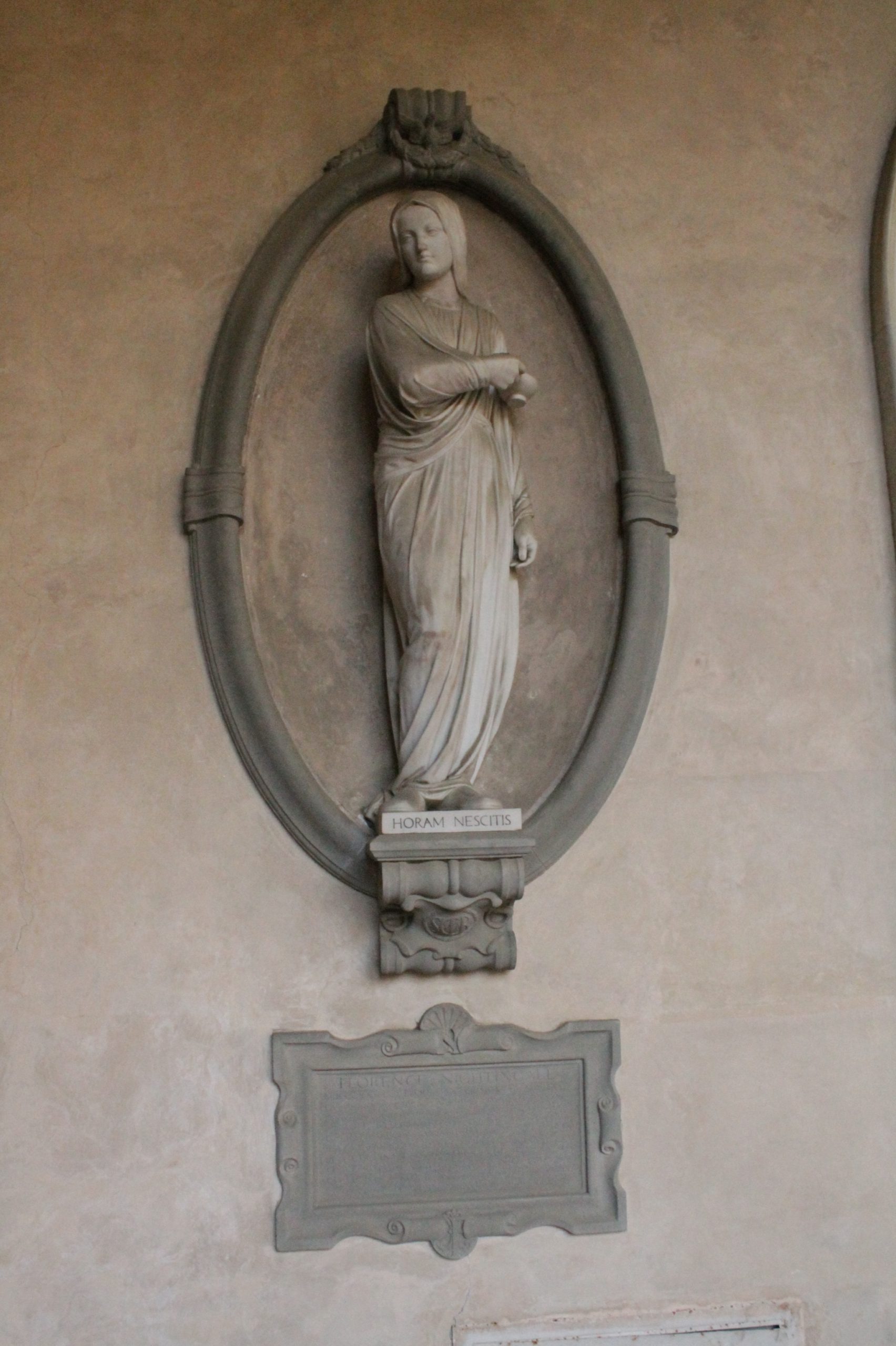
Memorial to Nightingale, Basilica of Santa Croce, Florence, Italy
Memorials in Florence include a street named after Florence Nightingale in the Cascine park. In the cloister of the Basilica of Santa Croce, an oval niche contains a lovely marble statue of her holding her lamp; it represents her as one of the Wise Virgins in the Gospel. The statue was commissioned by the English community in Florence and created in 1913 by the British sculptor Francis William Sargant.
Villa Colombaia is now a school operated by nuns, the Suore Adoratrici del Sangue di Cristo. In 1994, Joan Nightingale Fox, Florence Nightingale’s grandniece, came to Florence for the dedication, on May 12, of a plaque on the facade of the Villa, which proclaims it as the nurse’s birthplace. Fox was a retired nurse who also crusaded for high standards for nurses and better conditions in hospitals. Her father had migrated to Australia, where she was born. She decided to become a nurse after an Australian hospital ship was destroyed by the Japanese during World War II, killing both the young volunteer nurses and the patients. Fox, who died in November 2010, noted when she was in Florence for the dedication ceremony, that three of her nieces and three of her grandnieces are nurses. They will carry on the family tradition.

